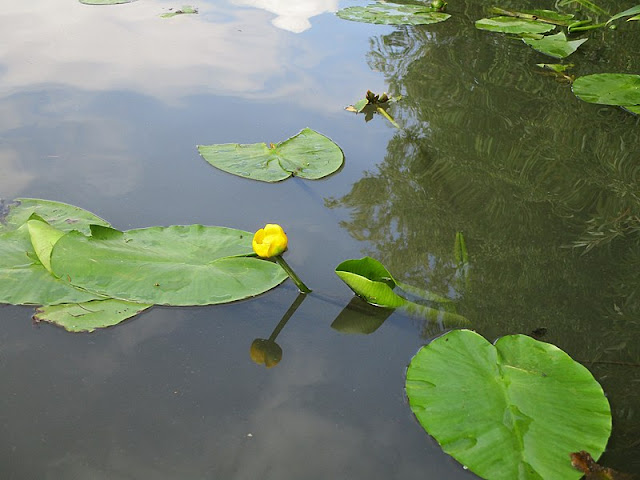We have all seen a yellow pond lily floating lazily in the shallow area of a pond or lake...but have you ever wondered how Native Americans used this unique aquatic plant medicinally? The Yellow Pond Lily is native to the Eastern and Western United States, Africa, and temperate Europe. Today, it is naturalized all over the U.S. Native American communities found so many uses for this useful flower from using it as a dermatological aid to treating pain.
About the Yellow Pond Lily
The Yellow Pond Lily is an aquatic perennial that is in the Nymphaeaceae family. The species botanical name is Nuphar lutea. Yellow Pond Lilies emerge about three years after seed germination. New plants or colonies are generated by a spongy tuberous root system. They are usually found in the shallow areas of lakes, ponds, swamps, rivers, and streams. The solitary flower blooms from mid-spring through early autumn above the water and is a hermaphrodite. This lotus-like flower has five or six sepals that help support the inner more delicate yellow petals as it blooms. The flower sits atop a heart-shaped or cordate lilypad leaf that can grow up to a foot across and has a long, stout stem running down into the sediment. The flowers close at night.
It is pollinated by flies that are attracted to its bright color and slightly alcoholic scent. The bottle-shaped fruit of this plant contains many seeds that are dispersed by water currents. A nickname of this plant is spatterdock because of the way the seeds are spattered on the water when the fruit bursts.
 |
| The fruit of the Yellow Water Lily |
Culinary and Medicinal Uses
It has been documented that Native American people gathered the thick rootstocks in the winter and spring, roasted and ate them. The roots were also sliced, pounded and dried, and then ground into meal or flour. The seeds were collected and fried in bear fat by some Native American tribes. They also popped the seeds like popcorn. The taste is said to be mildly sweet, sour, and bitter. The Lakota, Cheyenne, Menominee, and Comanche boiled the roots and ate them. The Montana used the seeds to thicken soup and also ate them like popcorn.
First Nation Cultures such as the Nuxalk use rhizomes to treat tuberculosis, rheumatism, heart disease, and gonorrhea. Like the Iroquois and the Bella Coola, the Nuxalk use the infusion of dried roots to treat blood disorders. One of the most common uses of yellow water lilies used by the Iroquois, Menominee, Micmac, Ojibwa, Penobscot, Potawatomi, and Sioux was to use a poultice of the roots and apply them to cuts, bruises, and swellings. The roots were also used in a decoction to treat colds, fever, and internal pain. Some communities like the Thompson would make a poultice out of freshly dried leaves and apply that to wounds, cuts, and sores. The Rappahannock used warm leaves to treat boils and to remove fever and inflammation from sores. A compound of leaves was sometimes used to detect witches and a poultice of roots was used to treat sore areas caused by witchcraft.
Did You Know...
Common names for the Yellow Pond Lily include the North American Pond Lily, Spatterdock, Water Nymph, Water Cabbage, Cow Lily, and Frog Lily.
Yellow Lily's botanical name, Nuphar lutea is derived from the Arabic and Persian ninufar, meaning pond lily and lutea that is Latin for golden, saffron, orange-yellow.
Recent studies have concluded that this plant has astringent compounds.
Recent research developments have found that Nuphar alkaloids can help with diseases like cancer because of the way they induce cell death.
Stonemasons carved the forms of water lilies on the roof bosses of the Bristol Cathedral and Westminster Abbey because they are thought to encourage celibacy.



No comments:
Post a Comment